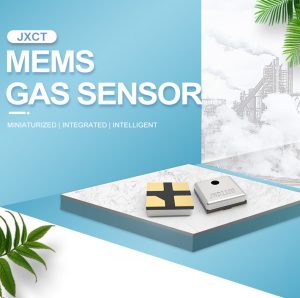Abstract
This paper reports on a capacitive MEMS hydrogen sensor using Pd-based metallic glass (MG) for future hydrogen society. First, we investigate PdCuSi as a Pd-based MG and show that this material is promising for capacitive MEMS hydrogen sensor. Second, we employ the Pd-based MG in a hydrogen sensor that has an inverted T-shaped electrode. The gas sensor is fabricated by a surface micromachining process. We show that the fabricated hydrogen sensor exhibits hysteresis-free and fast response properties at room temperature.

Introduction
In recent years, efforts to develop hydrogen-related technologies have been made worldwide with the aim of achieving the so-called hydrogen society from perspectives such as preventing global warming. However, hydrogen is a flammable gas, and hydrogen leaks need to be detected promptly. Fast-response hydrogen sensors are therefore required. In addition, low power consumption is important for continuous monitoring in battery driven devices.
Conventional hydrogen sensors are mainly of the catalytic type, semiconducting metal oxide type, and thermal conductivity type and all of these need a heater for hydrogen sensing. For example, catalytic type sensors are based on detecting the temperature rise produced by the combustion heat of oxygen and combustible gas using catalysts such as Pd (palladium) or Pt (platinum). Thus, power consumption is as high as several hundred milliwatts to several watts and is difficult to reduce. Pd is also known to absorbs hydrogen, and this hydrogen absorption brings about a change in physical properties such as electric resistance and mechanical strain. Besides, this phenomenon occurs even at room temperature, and is thus promising for the realization of ultra-low power hydrogen sensors. A number of hydrogen sensors have therefore been proposed that use the hydrogen absorption characteristic of Pd. These include resistive type sensors, work function-based sensors and capacitive MEMS gas sensors.
Resistive sensors utilize the fact that the electrical resistance of Pd changes with hydrogen absorption. Work function-based sensors utilize the effect of hydrogen on the Pd work function, including sensors that use Schottky diodes using PdNi and field-effect transistors with Pd gates. In capacitive MEMS sensors, Pd stress variation with hydrogen absorption is utilized. These types allow for lower power consumption as compared to sensors using electric resistance or work function, because the MEMS capacitive sensors do not use any DC current. On the other hand, Pd response to hydrogen is slow, absorbed hydrogen is hard to release, and the problem of hysteresis arises.
Against this background, we proposed a capacitive MEMS hydrogen sensor using Pd-based metallic glass (MG) as a sensing film In this paper, we first present the results of sensing film investigation. Then we present simulation results for the capacitive MEMS hydrogen sensor using material properties of Pd-based MG, and report on fabrication and measurement results of a prototype sensor.
 : +86 155 8830 2704
: +86 155 8830 2704 : jxdziot@gmail.com
: jxdziot@gmail.com
